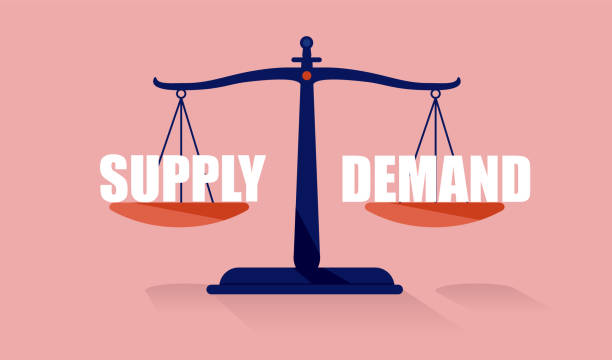Value Creation and the Supply Side
The Supply Side
In chapter four of Wealth and Poverty, Gilder discusses the supply side of capitalism that creates value. On page 52, Gilder summarizes this with the essence of capitalism, which is that in order to receive, one must give, and in order to demand, you have to supply. In our previous essays, we talked about this topic more in depth. Reciprocity occurs because it is human nature to give back once we receive something and vice versa. Demand is one of the major topics that stuck out to me in this section. You have to supply products in order to demand them, because without supply, consumers do not know what to demand. He explains this in a different way that provoked a new perspective regarding supply and demand.
“In economics, when demand is permitted to displace supply in the order of priorities, the result is a sluggish and uncreative economy, inflation, and a decline in productivity” (Gilder, 2012, p. 53).
We have been taught that supply always comes first because that is how demand is created. However, this is saying that if demand comes before supply, then the economy is dull, unproductive, and inflated. There are no innovative products because we are demanding something from the past without looking towards what could be created in the future. When entrepreneurs invent new products, consumers create demand for it because they are able to see the product that brings awareness to a new want or need. We do not know what we do not have, so if demand is prioritized, it is only for existing products and services. In addition to this, since we only demand existing products that could have a low supply, then there is inflation due to higher demand. Businesses must raise their prices to keep their resources limited to those who need it rather than those who just want it because supply is low. This also affects the productivity of economies because there are no new industries to create new jobs, products, and services for people. We notice this in our lives that when things stay consistent with routine, we get bored which makes us unproductive because we get tired of the same things. This is why it is important for supply to come before demand to keep the economy running smoothly.
In addition to supply creating demand, supply creates wants based on what the producers want consumers to see.
“…’wants are increasingly created by the process by which they are satisfied…Or producers may proceed actively to create wants through advertising and salesmanship’”(Gilder, 2012, p. 61).
It is interesting how we can see products on a shelf and not really think anything about them, but when we see an advertisement or hear word-of-mouth marketing from people we know, then we are immediately intrigued by the product. The positioning the producer puts on the product is what creates the want for the product, which coincides with supply and demand. I think of one of the most popular fads right now with the Stanley 40oz. tumblers based on this topic. One day, Stanley came out with this product, and it was being promoted to the point that some people bought it, but it was not extremely popular. Now, it has become a widely known product that is always sold out because everyone has discovered this want for this tumbler and buys it as soon as it comes in stock. Producers make the supply that creates the want and demand for the product.
Entrepreneurs are the main reason for supply and demand. Gilder (2012, p. 65) explains that economies grow from the willingness of men to take risks to turn their ideas into businesses before knowing the outcome of their success. I think this is an interesting perspective because without these entrepreneurs, we would not have the economy we see today. Entrepreneurs take the risk to turn their ideas into realities. They could either be successful, or lose everything, but without them we would not have new businesses to support and satisfy our wants and needs that we did not realize we had.
Gilder concludes this chapter with one final thought that summarizes the whole chapter.
“By altering the pattern of rewards to favor work over leisure, investment over consumption, the sources of production over the sumps of wealth, taxable over untaxable activity, government can directly and powerfully foster the expansion of real demand and income” (Gilder, 2012, p. 74).
This fits in with supply and demand because when the economy is more productive overall, supply and demand increase simultaneously. When we invest in businesses rather than just consuming products with no return, there are less resources available to put back into supplying. This follows with putting more time into work rather than just sitting around allows for businesses to prosper with an abundance of supplies to keep consumers satisfied. With a well-regulated economy, the government is able to keep taxes down because production levels are at equilibrium with less benefits being handed out due to a suffering economy. Overall, this chapter was very well written to understand the effects of supply and demand and how each works to effect consumer behavior and the economy.
References
Gilder, G. F. (2012). Chapter Four: The Supply Side. In Wealth and poverty (pp. 51–74). essay, Regnery Publishing, Inc.
